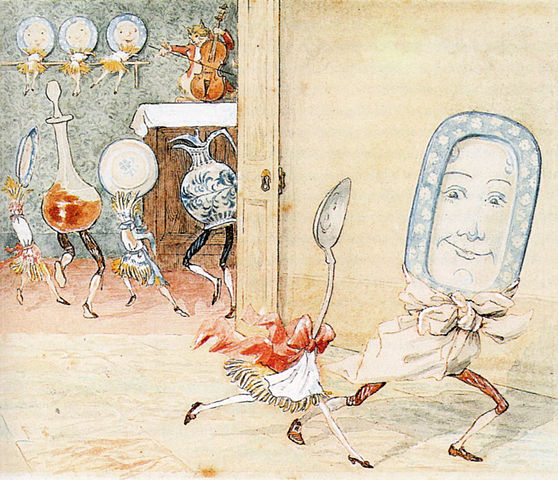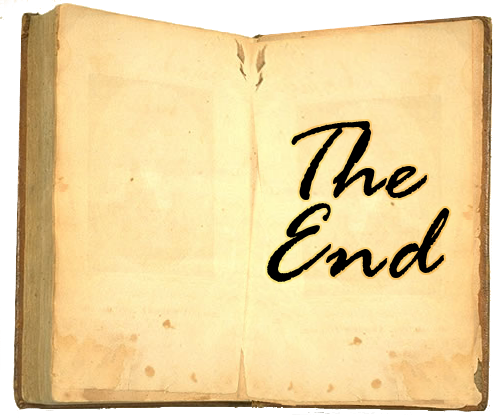Have you ever heard that immersion is the best way to learn a language? The same can be said of literature.
The more you read, the more you learn about how stories, poems, and plays are structured, what makes them so enthralling, and how to analyze them.
Just like with any language, there are certain words and phrases in the language of literary analysis that can get you pretty far. I’m here to explain a few of these literary terms and give you some examples of how they’re used in some of the stories you may already be familiar with.
After you have a grasp of these literary terms, you can identify them as you’re reading, which makes writing essays faster, easier, and more fun.
Literary Terms About Comparisons
#1 Allegory
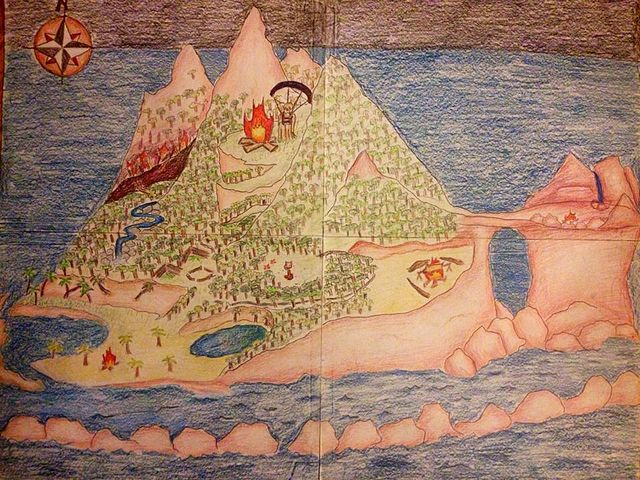
An allegory is when an author uses characters or events that represent larger, more abstract ideas. Authors typically use allegory to teach a lesson of some sort.
Lord of the Flies, for example, is filled to the brim with allegory. Piggy’s glasses represent knowledge, the conch stands for order, and the “beast” represents evil. These objects can be seen as symbols. However, unlike simple symbolism, they appear throughout the entire novel.
#2 Analogy
An analogy is when the author compares two, often dissimilar, objects or ideas to help the reader or a character within the story grasp the meaning of the main thing or idea being described.
When done too often in a story, analogies can get old fast. However, when done well, they can describe a character’s smile or the emptiness of a room very well.
One of the most famous examples of analogy can be found in the now classic film Forrest Gump when Forrest states, “Mama always said life was like a box of chocolates. You never know what you’re gonna get.”
Life isn’t literally like a box of chocolates in most regards, but Forrest finds one similarity that makes the analogy work (and he conveniently explains the similarity in the next sentence).
#3 Simile
A simile is an analogy that compares objects, people, characteristics, or events using words such as “like” or “as” (instead of the direct kind of comparison you would see in a metaphor).
A humorous example of a simile comes from Charles Dickens’s A Christmas Carol when Dickens writes,“Old Marley was as dead as a doornail.”
It’s especially funny because Dickens goes on to describe how it’s not really a great comparison since doornails aren’t exactly dead, but how “the wisdom of our ancestors is in the simile,” and therefore, he’ll use it.
#4 Metaphor
A metaphor is a type of analogy where something is directly compared to something else. It differs from similes in that it actually claims a person or object is something else instead of saying it is like something else.
Shakespeare is the king of analogies—both similes and metaphors. One well-known example comes from Romeo & Juliet when Romeo says, “But soft! What light through yonder window breaks? It is the east, and Juliet is the sun.”
Juliet, of course, is not the sun, but Romeo’s world now revolves around her.
(Read 10 Heart-Stopping Topics for Your Romeo and Juliet Essay for additional ideas.)
#5 Symbolism
Symbolism is a literary term that gets drilled into the brains of students because it occurs so frequently in every type of literature. Symbolism is when the author attributes a value or idea to an object that is different from its literal value or use.
Disney movies tend to have a lot of symbolism in them. Beauty and the Beast, for example, uses the west wing of the castle to symbolize the isolation the Beast feels from the rest of the world. He urges Belle to never go there because he doesn’t want her to feel that same isolation or to see how truly lonely he is.
(Read Lord of the Flies Symbolism: 3 Ideas for Your Essay for some additional examples.)
Literary Terms About Specific Words
#6 Alliteration
Alliteration is one of the more fun literary terms. It’s used to describe instances where a string of words contains the same beginning sounds, usually consonants.
Students tend to focus more on alliteration in analyses of poetry over other types of literature because each word in poetry seems to be written with more intention. However, alliteration makes it into novels as well.
Consider the four founders of Hogwarts in the Harry Potter series: Godric Gryffindor, Helga Hufflepuff, Rowena Ravenclaw, and Salazar Slytherin. Each name is alliterative.
Authors often name characters this way to add a sense of whimsy, to make the characters easier to remember, or just because they like the way it sounds.
Literary Terms About the Classics
#7 Allusion
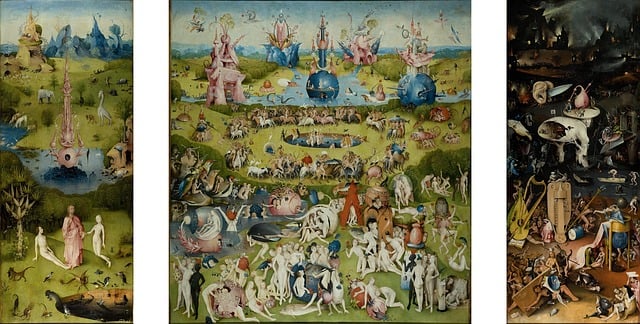 What goes on when you allude to something? You are referencing a different conversation, person, or event. Allusion in literature is similar, except it’s more specific than that.
What goes on when you allude to something? You are referencing a different conversation, person, or event. Allusion in literature is similar, except it’s more specific than that.
Literary allusion is when authors references mythology, other (mostly classic) literature, or a historical event that they believe the reader has enough knowledge about to understand the allusion.
Authors make allusion statements all the time. Comparing a place to the Garden of Eden is a form of allusion because it draws a comparison based on the Bible.
A great example in popular culture is found in Martin Luther King, Jr.’s I Have a Dream speech. The second sentence of the speech is, “Five score years ago, a great American, in whose symbolic shadow we stand today, signed the Emancipation Proclamation.”
Not only did King speak about Abraham Lincoln, but he also alluded to Lincoln’s Gettysburg Address, which began with “Four score and seven years ago…”
#8 Archetype
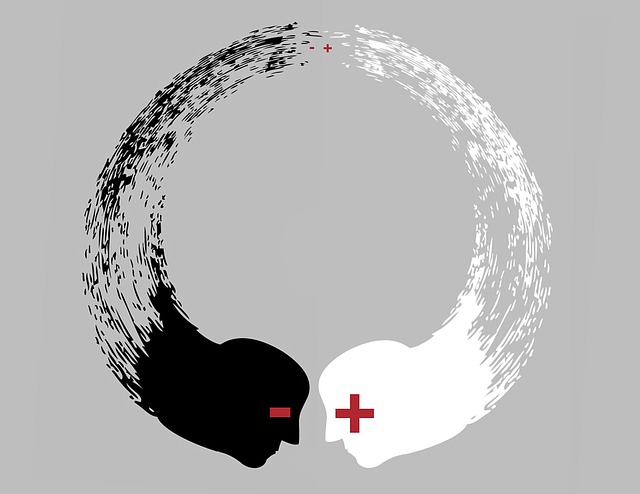
Archetypes are themes, characters, or situations that authors have used throughout the history of storytelling. They tend to represent universal truths about human nature, such as the struggle of good vs. evil, or a classic hero or villain.
Archetypes are apparent in any genre and perhaps nearly any story if you look hard enough. One classic example is the good vs. evil archetype found in Star Wars. Luke, representing the light (good) side of the force, goes against Darth Vader, the dark (evil) side of the force.
Literary Terms About the Overall Story
#9 Conflict
Conflict is typically what makes a novel or other type of story worth reading. There are usually several conflicts within a story—some are internal and some are external.
External conflicts involve characters’ struggles with outside forces—in many instances, another character. However, the external forces could also be an event like a war.
Internal conflicts are when characters have two internal opposing forces. Sometimes it’s when protagonists have to decide to go against their own morals to protect someone. Other times, it’s when antagonists choose between their pride and getting the results they have been working toward the whole story.
Going back to Harry Potter, the main conflict was Harry’s (and the wizarding world’s) fight against Voldemort. But Harry also had other conflicts, such as getting respect from his biological family, performing in the Tri-Wizard Tournament, and being constantly antagonized by Malfoy.
#10 Foreshadowing

Foreshadowing is when the author drops hints about major events or plot points that will happen later in the story. When such events or plot points happen, authors want readers to have that aha! moment or to think, “Why didn’t I see that coming? The clues were all there!”
One somewhat obvious example is in the movie adaptation of The Wizard of Oz. Mrs. Gulch is seen riding a bike and later, during the tornado, is transformed briefly into a witch. This foreshadows Dorothy’s eventual run-in with the Wicked Witch of the West.
#11 Theme
If you’ve written several literary analysis essays, there’s a good chance you’ve written about themes. And if you haven’t yet, you will probably do so soon. The theme of a novel, play, or poem is its underlying message or main idea.
It’s important to note that the theme is typically the author’s reaction to or opinion of a topic, not the topic itself.
For example, several other themes, of course, including how friendship can help people survive and how the materialism/excess of the wealthy leads to the exploitation of the poor.
Want some additional theme examples? Read these posts:
- 4 Themes in The Scarlet Letter for an Easy A on Your Essay
- Jealousy in Othello: 7 Ideas for A Convincing Analysis
#12 Tone
Have you ever heard the phrase, “it’s not what you say, it’s how you say it”? That’s the idea behind tone. The tone of a literary work is when authors use specific words or phrases to express their attitude about a subject or about their audiences.
The Diary of Anne Frank, which in reality ended in tragedy, takes on a tone of hope. The young girl, despite living in a small attic and under the constant terror of Nazis on her doorstep, seems generally optimistic throughout the book. She even describes her plans to go back to school with her sister.
Literary Terms Involving Non-Comparative Descriptions
#13 Hyperbole
Hyperbole is basically just exaggeration. It’s usually done to either be humorous or to really emphasize something.
Advertising makes great use of hyperbole. For example, Red Bull’s tagline is, “It gives you wings!” Red Bull doesn’t actually give people wings, but presumably makes them feel so energetic that they feel like they could fly.
#14 Imagery
Imagery is one of those literary terms that can often be misunderstood. Sometimes imagery is described as using descriptive language that allows readers to see the scene in their minds.
But it’s so much more than that!
In reality, imagery is descriptive language that appeals to all the senses. It can describe how rancid something smells or how rich and sweet something tastes. And of course, it can describe how vibrant and green a forest looks.
Children’s books and full-length novels alike are packed with imagery. Just take a look at this excerpt from Charlotte’s Web:
“In the hard-packed dirt of the midway, after the glaring lights are out and the people have gone to bed, you will find a veritable treasure of popcorn fragments, frozen custard dribblings, candied apples abandoned by tired children, sugar fluff crystals, salted almonds, popsicles, partially gnawed ice cream cones and wooden sticks of lollipops.”
#15 Personification
Personification is when an object or other non-human thing is given human characteristics. This makes it more relatable and impactful for the reader.
Personification can be seen anywhere, but it’s most obvious in poetry.
Take the nursery rhyme Hey Diddle, Diddle. The lines, “The little dog laughed to see such a sport / and the dish ran away with the spoon,” contain two examples of personification. Dogs don’t laugh, and dishes and spoons don’t run. But in the context of the poem, it makes sense.
(Want some additional examples? Read How to Spot Personification in Romeo and Juliet.)
The End
There are a lot of other examples of terms used in literary analysis that may pop up in your essay assignments, but this should give you a solid start. If you need some examples of how others have written about these literary terms, check out the following essays:
- The Use of Allegory in Macbeth
- The Use of Metaphors in Emily Dickinson’s Poems
- The Wise Old Man Archetype
- An Analysis of the Use of Imagery in John Gardner’s Grendel
- A Literary Analysis of Old Testament Allusions in Beowulf
Need some additional guidance on how to tackle your literary analysis essay? Try these posts:
- How to Write a Literary Analysis That Works
- 8 Components of a Smart Literary Analysis
- Writing About Literature: 9 Things You Need to Know
- Literary Analysis Essay Tips from a Kibin Editor
And finally, depending on what literary work you’re analyzing, you might find these posts helpful:
- The Great Gatsby: 8 Tips for a Literary Analysis
- Araby by James Joyce: 8 Tips for a Literary Analysis
- 3 Smart Ideas for Your Sir Gawain and the Green Knight Analysis
- “Mother Tongue” by Amy Tan: 10 Tips for a Literary Analysis
And as always, if you need help making your essay stronger, the Kibin editors are here to assist. With their help and lots of practice, you can become fluent in literary terms.
Happy writing!



